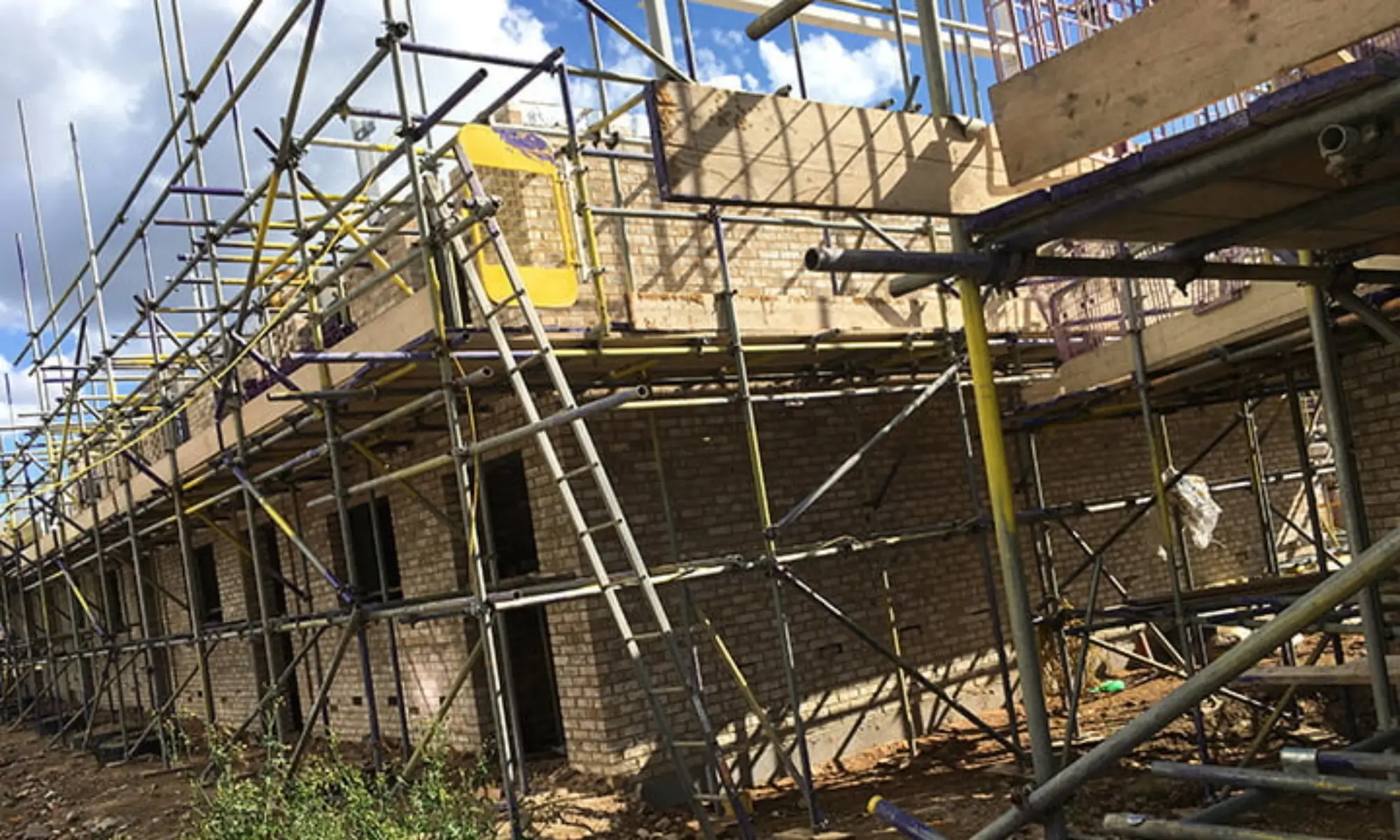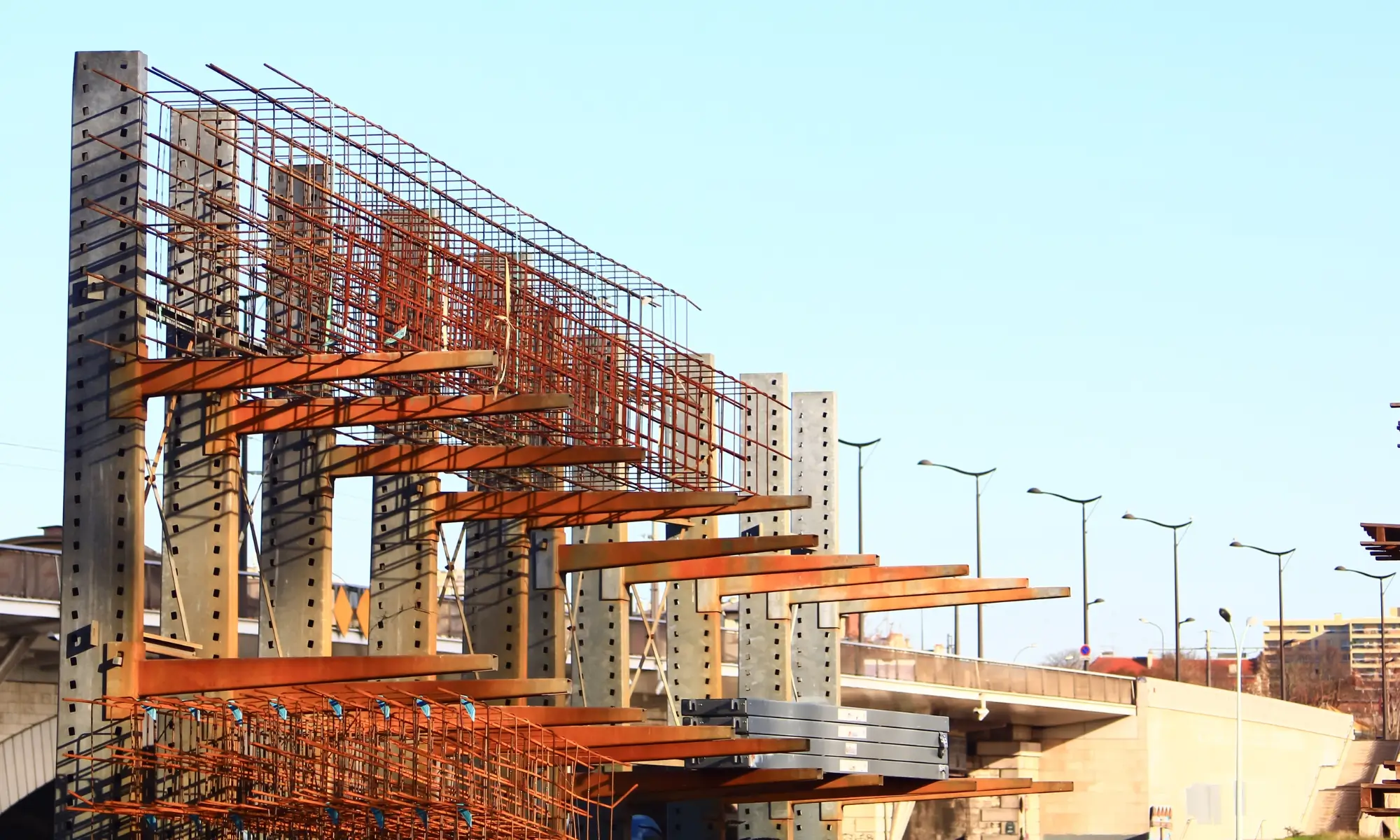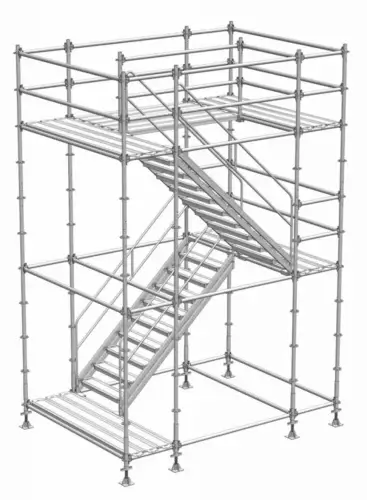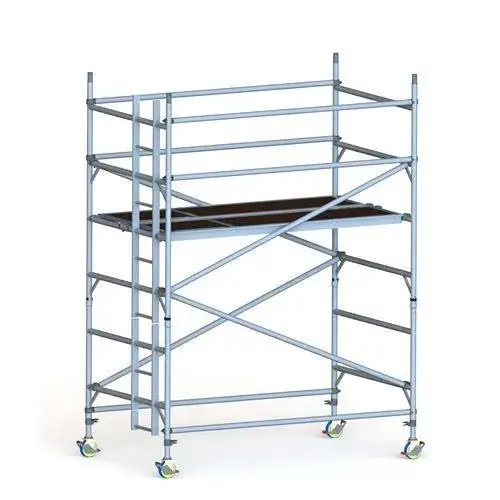Scaffolding plays a vital role in the construction industry. It serves as a temporary framework that provides support and access to workers during building, maintenance, or repair activities. Whether it’s a towering skyscraper or a residential home, scaffolding ensures safety and efficiency by enabling tasks to be performed at various heights with stability and ease.
Given the diverse needs of construction projects, scaffolding systems are available in various types, each tailored to specific applications, site conditions, and safety requirements. From single scaffolding for brick masonry to advanced steel or patented systems for complex structures, choosing the right type is critical to project success.
This blog will explore the different types of scaffolding used in construction, their key features, benefits, and ideal applications. Whether you’re a contractor, engineer, or construction enthusiast, this comprehensive guide will help you understand how scaffolding adapts to meet the dynamic demands of modern construction.
What Is Scaffolding?
Scaffolding is a temporary structure designed to support workers and materials during the construction, repair, or maintenance of buildings or other structures. Typically made of steel, aluminum, or bamboo, scaffolding offers a stable and secure platform for workers to perform tasks at height.
Scaffolding systems are designed with components such as standards, ledgers, braces, platforms, guardrails, and toe boards to ensure stability and safety. Selecting the right type of scaffolding is crucial for efficiency, cost-effectiveness, and the safety of workers.
Why Is Scaffolding Important?
- Worker Safety: Scaffolding provides a secure platform, reducing the risks of falls and other accidents.
- Accessibility enables workers to reach hard-to-access areas, ensuring efficient task completion.
- Material Support: Scaffolds can bear heavy loads, facilitating the safe movement of tools and materials.
- Versatility: Scaffolding can be customized to suit various project requirements.
Types of Scaffolding in Construction
Scaffolding is a temporary structure designed to support workers and materials during building construction, maintenance, or repair. It provides safe access to elevated areas, stability for tasks at height, and flexibility to adapt to various construction needs. Below is a detailed exploration of the types of scaffolding commonly used in construction:
1. Single Scaffolding

Single scaffolding, also known as bricklayer scaffolding, is a temporary structure commonly used in brick masonry construction to provide workers with access to elevated areas. This type of scaffolding is erected parallel to the wall under construction and consists of several key components:
- Standards: Vertical members placed at intervals of approximately 2 to 2.5 meters.
- Ledgers: Horizontal members fixed to the standards at vertical intervals of about 1.2 to 1.5 meters.
- Putlogs: Transverse members that rest on the ledgers at one end and are inserted into holes (putlog holes) in the wall at the other end, spaced around 1.2 to 1.5 meters apart.
Advantages:
- Simplicity: The straightforward design allows for quick assembly and disassembly.
- Cost-Effectiveness: Utilizes fewer materials compared to more complex scaffolding systems.
- Accessibility: Provides adequate access for workers to perform tasks such as bricklaying, plastering, and painting.
Limitations:
- Structural Dependency: It relies on the wall for support, which may not be suitable for all construction types, especially those involving stone masonry, where creating putlog holes is challenging.
- Height Restrictions: Best suited for structures of moderate height; additional support may be required for taller buildings.
Safety Considerations:
- Proper Installation: Ensure all components are securely fixed and the scaffold is stable before use.
- Regular Inspections: Conduct routine checks for signs of wear, damage, or instability.
- Load Management: Avoid overloading the scaffold to prevent structural failure.
- Use of Personal Protective Equipment (PPE): Workers should wear appropriate safety gear, including helmets and harnesses.
In summary, single scaffolding is a practical and economical solution for brick masonry projects, offering essential support and access for construction activities. However, assessing each project’s specific requirements is crucial to determine the most appropriate scaffolding system.
2. Double Scaffolding

Double scaffolding, or mason’s scaffolding, is a temporary structure commonly used in stone masonry construction. Unlike single scaffolding, which relies on the building wall for support, double scaffolding is self-supporting, making it ideal for situations where the wall cannot bear the load of the scaffold.
Key Features:
- Two Rows of Standards: The scaffold consists of two parallel rows of vertical supports (standards). The first row is approximately 20–30 cm away from the wall, and the second is about 1 meter away from the first.
- Ledgers and Putlogs: Horizontal members called ledgers connect the standards, while putlogs are placed on the ledgers to support the working platform.
- Cross Bracing and Rakers: Cross braces and rakers (diagonal supports) are often added to enhance stability.
Advantages:
- Enhanced Stability: The dual-row design provides greater sturdiness, making it suitable for heavy-duty tasks.
- Independence from Wall: Since it doesn’t rely on the wall for support, it’s ideal for stone masonry, where creating holes for putlogs is challenging.
- Versatility: This can be used in various construction scenarios, especially where wall integrity must be preserved.
Applications:
- Stone Masonry: Particularly useful in stone masonry projects where the wall cannot support scaffolding.
- High-Rise Construction: Provides safe access for workers at elevated heights.
- Maintenance and Repairs: Suitable for facade work, painting, and other maintenance tasks.
Safety Considerations:
- Proper Assembly: Ensure all components are correctly installed to maintain structural integrity.
- Regular Inspections: Conduct routine checks for signs of wear, damage, or instability.
- Load Management: Adhere to specified load limits to prevent overloading.
- Use of Personal Protective Equipment (PPE): Workers should wear appropriate safety gear, including helmets and harnesses.
In summary, double scaffolding offers a robust and reliable solution for construction projects, especially in stone masonry, where wall support is not feasible. Its design ensures stability and safety, making it a preferred choice in various construction scenarios.
3. Cantilever Scaffolding

Cantilever scaffolding, also known as needle scaffolding, is a specialized system used in construction and maintenance to provide access to areas where traditional ground-supported scaffolding is impractical. This setup involves horizontal beams, termed “needles,” that extend outward from a building’s structure, supporting a working platform without relying on ground support.
Key Features:
- Needles: Horizontal beams inserted into or anchored to the building, supporting the scaffold’s load.
- Brackets: Connect needles to the building, ensuring stability.
- Platform: The working surface for personnel and materials.
- Guardrails and Toeboards: Safety measures to prevent falls and protect workers.
Advantages:
- Access to Obstructed Areas: Ideal for reaching overhangs, balconies, or areas with restricted ground access.
- Space Efficiency: Eliminates the need for ground-level supports, which is beneficial in congested or narrow spaces.
- Versatility: Suitable for various tasks, including painting, repairs, and window installations.
Common Applications:
- Building Facade Maintenance: Enables work on exterior surfaces without ground-level obstructions.
- Window Installation and Repair: Provides a stable platform for tasks on upper floors.
- Roof Maintenance: Facilitates access to roof edges and overhangs.
- Bridge Construction and Maintenance: Allows work on sections where ground support isn’t feasible.
Safety Considerations:
- Proper Design and Installation: Ensure qualified personnel design and erect the scaffold.
- Regular Inspections: Conduct routine checks for structural integrity and compliance with safety standards.
- Use of Personal Protective Equipment (PPE): Workers should wear appropriate safety gear, including harnesses.
- Load Management: Set specified load limits to prevent overloading and potential collapse.
In summary, cantilever scaffolding offers a practical solution for accessing challenging areas in construction and maintenance projects, especially when ground-based scaffolding isn’t viable. Its design provides flexibility and efficiency, making it a valuable tool in various scenarios.
4. Suspended Scaffolding

Suspended scaffolding, or swing stage scaffolding, is a temporary platform system suspended from an overhead structure, such as a building’s roof or an elevated framework. This setup allows workers to access various heights by raising or lowering the platform as needed, making it particularly useful for tasks on tall structures where traditional ground-supported scaffolding is impractical.
Key Features:
- Suspension Mechanism: Platforms are hung using ropes, cables, or chains connected to stirrups or hangers at each end.
- Adjustability: The platform’s height can be modified using manual or motorized hoists, providing flexibility for different work levels.
- Platform Variability: Lengths can range from 3 to 72 feet, accommodating various project requirements.
Common Applications:
- Window Cleaning: Widely used by window washers on skyscrapers.
- Building Maintenance: Facilitates tasks like painting, facade repairs, and inspections.
- Construction: Assists in high-rise building projects where ground-based scaffolding isn’t feasible.
Types of Suspended Scaffolding:
- Two-Point (Swing Stage): The most prevalent type, suspended by two ropes or cables connected to stirrups at each end of the platform.
- Single-Point Adjustable: Supported by a single rope, allowing the platform to rotate and access different areas.
- Multi-Point Adjustable: Utilizes multiple suspension points, providing greater stability for larger platforms.
- Catenary: Features a platform supported by two horizontal and parallel ropes attached to structural members of a building.
- Float (Ship): Consists of a braced platform resting on two parallel bearers and hung from overhead supports by fixed-length ropes.
Safety Considerations:
- Proper Installation: Ensure all components are correctly assembled and anchored to prevent accidents.
- Regular Inspections: Conduct daily checks for wear, damage, or any signs of instability.
- Load Limits: Adhere to specified weight capacities to avoid overloading the platform.
- Fall Protection: Implement guardrails and personal fall arrest systems to safeguard workers.
In summary, suspended scaffolding offers a versatile and efficient solution for accessing elevated work areas, especially in urban environments with tall buildings. Its adaptability and ease of use make it a preferred choice for various maintenance and construction tasks.
5. Trestle Scaffolding

Trestle scaffolding is a type of scaffold that utilizes movable tripods or ladders to support a working platform. This design makes it particularly suitable for indoor tasks such as painting, repairs, and maintenance work up to a height of approximately 5 meters (16 feet).
Key Features:
- Support Structure: The scaffold is supported by tripods or ladders, providing a stable base for the working platform.
- Platform Height: Typically used for tasks requiring access up to 5 meters, making it ideal for interior work.
- Portability: The components are lightweight and easy to assemble and dismantle, allowing for quick relocation as needed.
Spacing and Stability:
- Platform Width: The working platform should be fully planked, with gaps between decking components not exceeding 20mm, ensuring a safe and stable surface.
- Height Adjustment: The scaffold’s height can be adjusted by modifying the extension of the trestles or ladders, accommodating various working levels.
Safety Considerations:
- Edge Protection: Edge protection is generally not required if the platform height does not exceed 2 meters. However, edge protection should be installed if the scaffold is erected next to a hazard that could result in a fall of more than 2 meters.
- Access: Access to the working platform is usually provided by secured ladders that extend past the platform or direct access from an adjacent structure. Frame rungs or bracing should only be used for access if permitted by the manufacturer.
- Load Capacity: Trestle scaffolds are suitable for light-duty work and should not be overloaded. To prevent structural failure, it’s essential to adhere to the manufacturer’s guidelines regarding maximum load capacities.
In summary, trestle scaffolding offers a convenient and efficient solution for low-height interior tasks, provided that safety protocols and manufacturer guidelines are strictly followed.
6. Steel Scaffolding

Steel scaffolding is a robust and versatile temporary structure widely used in construction and maintenance projects to provide safe access to elevated work areas. Its strength and durability make it suitable for supporting heavy loads and withstanding harsh environmental conditions.
Key Features:
- Strength and Durability: Steel scaffolding offers superior load-bearing capacity, making it ideal for heavy-duty applications.
- Modularity: The system comprises prefabricated components that can be easily assembled and disassembled, allowing for flexible configurations to suit various project requirements.
- Reusability: Steel components can be reused across multiple projects, enhancing cost-effectiveness over time.
Common Applications:
- Construction: Provides workers with access during building erection, facade work, and structural repairs.
- Industrial Maintenance: Facilitates access to equipment and structures in industrial settings for inspection, maintenance, and repairs.
- Event Staging: Constructing stages, seating, and other temporary event structures.
Advantages:
- High Load Capacity: Supporting substantial weights, accommodating workers and materials.
- Durability: Resistant to wear and tear, ensuring longevity even under demanding conditions.
- Fire Resistance: Unlike wooden scaffolding, steel does not burn, adding an extra layer of safety.
Considerations:
- Weight: Steel scaffolding is heavier than alternatives like aluminum, which may require more effort during assembly and transportation.
- Corrosion: Without proper treatment, steel is susceptible to rust; galvanization or painting is often employed to mitigate this issue.
When selecting a supplier, consider factors such as material quality, compliance with international standards, and the availability of necessary accessories to ensure the safety and efficiency of your scaffolding system.
7. Patented Scaffolding

Patented scaffolding is a prefabricated steel scaffolding system featuring specialized couplings and frames. It is designed for quick assembly and disassembly and offers adjustable working platforms to accommodate various heights and configurations.
Key Features:
- Prefabricated Components: Manufactured off-site, ensuring consistent quality and facilitating rapid on-site assembly.
- Adjustable Platforms: Brackets can be modified to achieve the desired platform height, enhancing versatility.
- Enhanced Safety: Incorporates built-in safety mechanisms such as locking systems, guardrails, and toeboards to reduce the risk of falls and accidents.
- Durability: Constructed from steel, providing robustness and longevity.
Spacing and Dimensions:
The modular design allows for flexible spacing and dimensions, adaptable to specific project requirements. Components are standardized, ensuring compatibility and structural integrity.
Applications:
Patented scaffolding is suitable for various construction and maintenance tasks, particularly where quick setup and adjustable platforms are beneficial. Common applications include building construction, repair, and maintenance projects.
Advantages:
- Efficiency: The modular, prefabricated components allow for quick setup and takedown, saving time and labor costs.
- Safety: Built-in safety features reduce the risk of falls and accidents on-site.
- Versatility: Adjustable platforms and modular components make it adaptable to various project needs.
In summary, patented scaffolding, with its prefabricated steel components and adjustable platforms, offers a versatile, efficient, and safe solution for various construction and maintenance projects.
8. Mobile Scaffolding

Mobile scaffolding, also known as rolling scaffolding, is a type of scaffold mounted on wheels or casters, allowing for easy movement across a worksite. This design is particularly beneficial for tasks that require frequent repositioning, such as painting, plastering, or maintenance work.
Key Features:
- Mobility: Mobile scaffolds equipped with wheels or casters can effortlessly be moved to different locations without the need for disassembly.
- Adjustable Height: Many models offer adjustable platforms to accommodate various working heights.
- Stability Mechanisms: Incorporate locking systems on wheels and stabilizers to ensure safety during use.
Advantages:
- Time Efficiency: Reduces downtime associated with dismantling and reassembling traditional scaffolding when changing work areas.
- Versatility: Suitable for both indoor and outdoor projects, adaptable to various tasks.
- Cost-Effective: Minimizes labor costs due to quicker setup and relocation times.
Safety Considerations:
- Secure Locking: Always engage wheel locks when the scaffold is stationary to prevent unintended movement.
- Load Capacity: Adhere to the manufacturer’s specified weight limits to avoid overloading.
- Surface Conditions: Operate on stable surfaces to maintain balance and prevent tipping.
- Regular Inspections: Conduct routine checks for structural integrity, ensuring all components are in good condition.
When selecting a mobile scaffold, ensure it meets international safety standards and is appropriate for your project’s specific requirements. Proper training in assembly and usage is also crucial to maintaining a safe working environment.
9. Bamboo Scaffolding

Bamboo scaffolding is a traditional construction method that utilizes bamboo poles tied together to create temporary frameworks for building and maintenance projects. Due to bamboo’s strength, flexibility, and rapid growth, this technique has been prevalent in various parts of Asia, notably in Hong Kong.
Key Features:
- Materials: It typically employs two types of bamboo: Mao Jue and Kao Jue. Mao Jue is thicker and stronger, about 75mm in diameter, with walls at least 10mm thick, and serves as the load-bearing support. Kao Jue is thinner, about 40mm wide, and is used for platforms, bracing, and horizontal support.
- Construction: Bamboo poles are lashed together using nylon or natural fiber straps, forming a sturdy and flexible structure. The assembly creates vertical squares approximately 75 cm by 75 cm, which act as both the structure’s support and the ladder for workers to move up and down the scaffolding.
Advantages:
- Strength and Flexibility: Bamboo’s high strength-to-weight ratio allows it to support significant loads while remaining lightweight and adaptable to various structural forms.
- Sustainability: As a rapidly renewable resource, bamboo is an eco-friendly alternative to steel or aluminum scaffolding. Its use reduces reliance on non-renewable materials and minimizes environmental impact.
- Cost-Effectiveness: In regions where bamboo is abundant, it offers a more affordable option than metal scaffolding, both in terms of material costs and labor for assembly.
Applications:
- Construction: Widely used for building residential and commercial structures, including high-rise buildings. In Hong Kong, bamboo scaffolding has been employed in constructing skyscrapers, demonstrating its capability to support large-scale projects.
- Maintenance and Repairs: It is ideal for facade work, painting, and other maintenance tasks due to its ease of assembly and adaptability.
Safety Considerations:
- Proper Training: Workers should be trained in the specific techniques of erecting and working on bamboo scaffolding to ensure safety and structural integrity.
- Regular Inspections: Routine checks for wear, damage, or signs of weakness in the bamboo poles and lashings are essential to maintain safety standards.
- Compliance with Regulations: Adhering to local building codes and safety guidelines is crucial to prevent accidents and ensure the scaffold’s stability.
Bamboo scaffolding remains a viable and sustainable construction method in regions where bamboo is readily available. Its strength, flexibility, and environmental benefits make it a valuable alternative to traditional scaffolding materials.
Conclusion
Scaffolding is an indispensable element in construction, offering workers a safe platform and access to perform tasks at heights. The diverse range of scaffolding types with unique features and applications ensures that projects can be executed efficiently, safely, and cost-effectively. From the simplicity of single scaffolding for brick masonry to the robustness of steel scaffolding for heavy-duty tasks, selecting the appropriate system depends on the project’s requirements, site conditions, and safety regulations.
Understanding the strengths and limitations of different scaffolding systems is crucial for achieving construction goals while maintaining a safe work environment. By carefully assessing your project needs, consulting with experts, and adhering to safety standards, you can ensure the scaffolding you choose supports your project and enhances its overall efficiency and safety.
Whether you’re managing a small residential project or a large commercial build, the right scaffolding system can make all the difference. Prioritize safety, adaptability, and quality to create a secure foundation for success in every construction endeavor.

